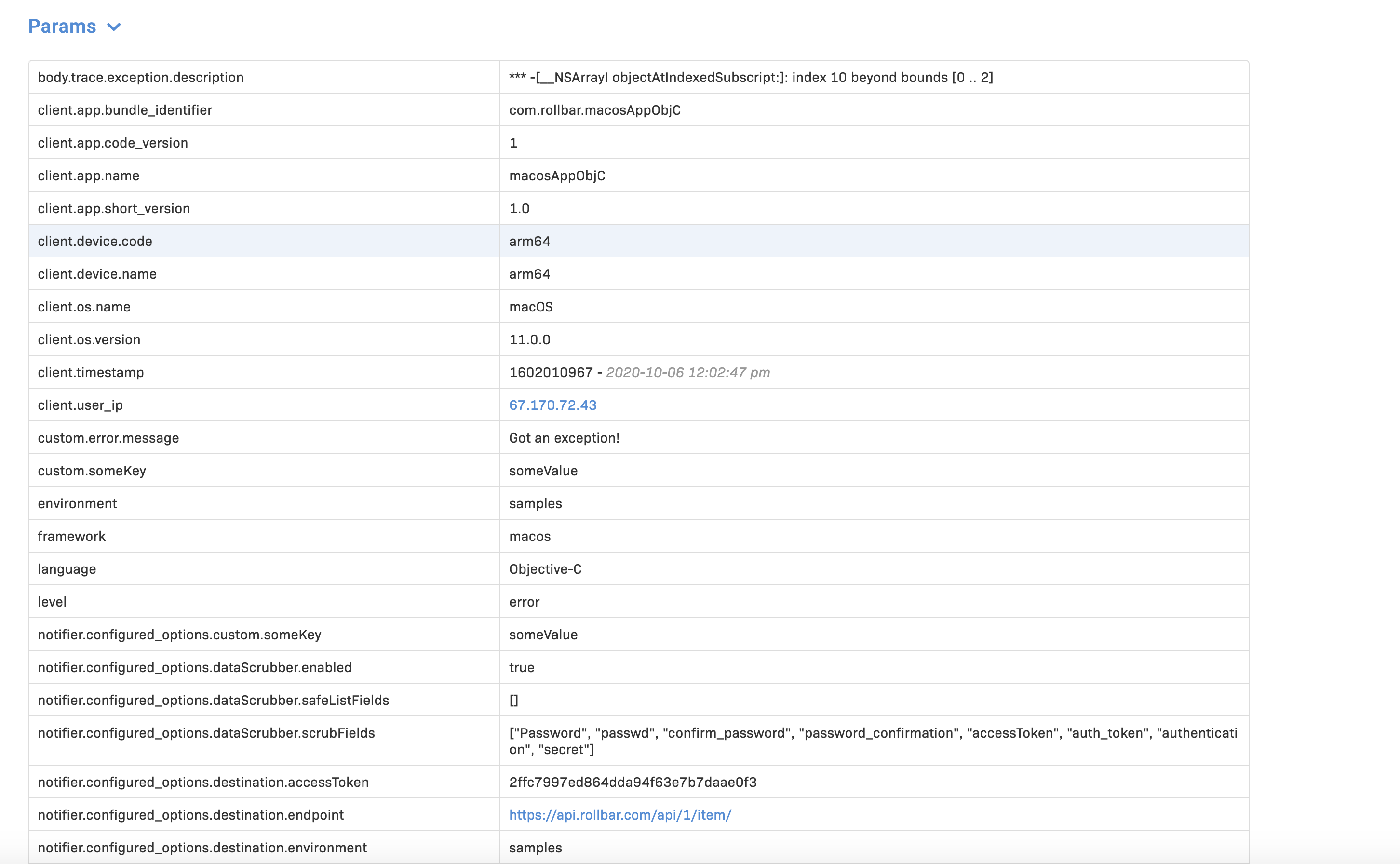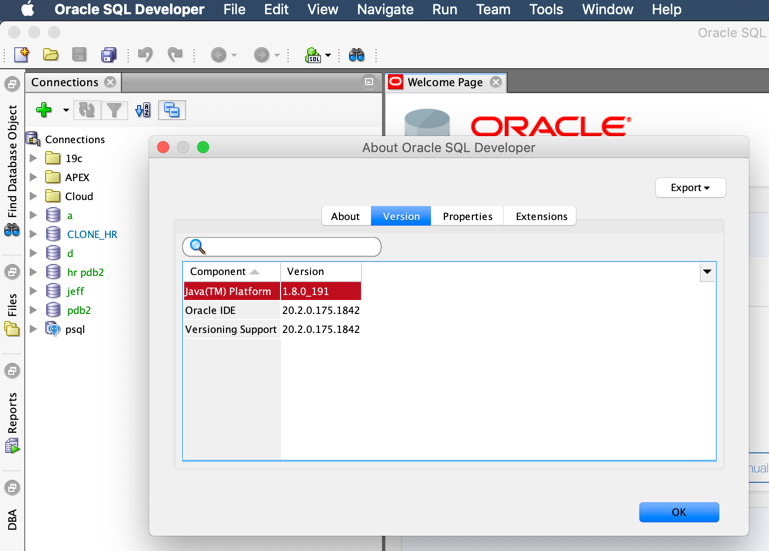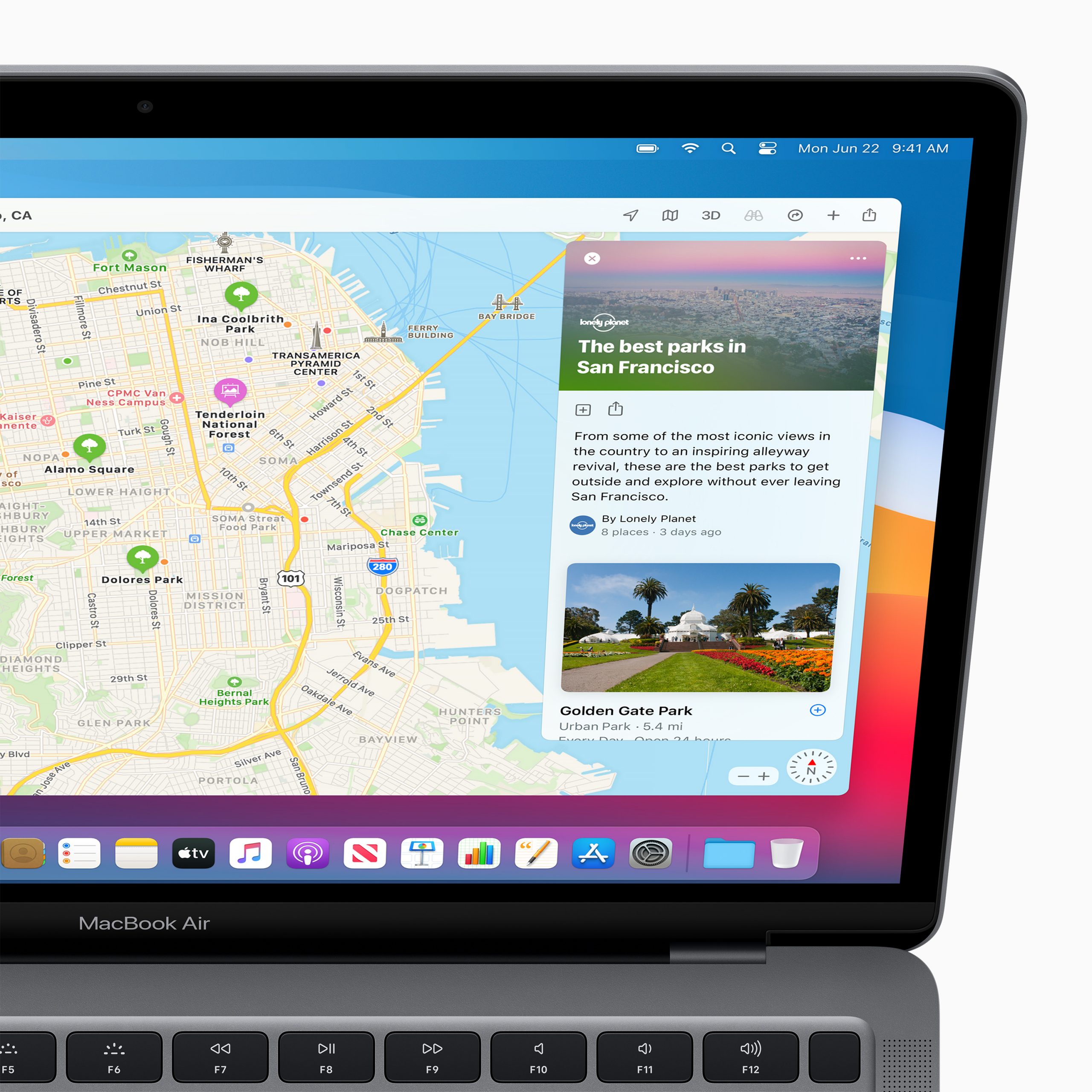- Written by: ilmarkerm
- Category: Blog entry
- Published: Sql Developer For Macos Big Sur Pc
- Macos Big Sur Download
- Sql Developer For Macos Big Sur Mer

Since I started a new job I also wanted to try out MacBook as my new laptop. I’ve never been a Mac user, but there seems to be a large group of people who think Macs are the best, so I needed to find out the goodness of Macs myself 🙂 A quick tip: Don’t upgrade to Yosemite if you laptop is bound to Active Directory.
Download iPL/SQL Developer for free. IPL/SQL Developer is a reference PL/SQL Developer version of the WEB, according to the pattern all PL/SQL Developer format, can be achieved without the client's database development using JAVA to develop. 14 hours ago Apple has moved on to its second developer beta of macOS Big Sur 11.2, providing testers with a new version of the Mac operating system for testing. The newest builds can be downloaded via the. I’ve been fighting for a couple of years now with an annoying performance bug in SQL Developer for OS X. After using the application for a while CPU usage would spike to around 100%, even when idle. This is a known issue associated with the “Look and Feel” preference. Basically, don’t use the “Mac OS X” setting. Instead, use the “Oracle” setting. The theme doesn’t matter.
One part of setting up my new laptop was also setting up SQL Developer WITH Oracle Driver, because a year or two ago I rolled out radius authentication for all users who need to access the production databases directly and radius (and other non-default-password authentication schemes) do not work with thin JDBC driver. Being new to Macworld and not finding any guides for this task online, it was quite a struggle in the beginning. Here I’m trying to share my experiences if anybody else find themselves in the similar situation. If you find any mistakes here, please let me know – I’m new to the world of MacOS 🙂
- Developer Community for Visual Studio Product family. Visual Studio 2019 8.6.4 crashes on Mac OS Big Sur. Macos 10.14 macos 10.15 macos 10.13 xamarin editor.
- MacOS Big Sur macOS Catalina tvOS 14 watchOS 7 Guides. I've been trying oracle sql developer and it's not very mac-like.

Jan Karremans just today published a similar article about Mac and Instant client, but the goal of my blog post is to get SQL Developer connected through Instant Client.
JDK
First you need Java installed, I installed 64-bit JDK8, but it would be better to install 64-bit JDK7, since SQL Developer 4.0 is not supported on JDK8.
Sql Developer For Macos Big Sur Pc
SQL Developer
When I’m writing this, SQL Developer 4.1 is in Early Adopter release and 4.0 is in production. I installed SQL Developer 4.0.3.
Oracle Instant Client
There is another reason to choose SQL Developer 4.0 over 4.1 – 4.1 requires version 12.1 of the Oracle Client and that is not yet released for MacOS. SQL Developer 4.0 requires Oracle Client 11.2.0.3 and that is available for MacOS. I downloaded Instant Client 11.2.0.3 (64-bit – since I installed 64-bit JDK): instantclient-basic-macos.x64-11.2.0.3.0.zip and instantclient-sqlplus-macos.x64-11.2.0.3.0.zip to be precise. I unzipped both these files under /opt so my Instant Client installation directory is /opt/instantclient_11_2. After unzipping, Instant Client installation instructions require creating the following symlinks:
Configuring SQL Developer
Open SQL Developer, open Preferences and go to Database > Advanced. Configure Oracle Client paths and check Use Oracle Client and Use OCI/Thick driver boxes. Here is the sample screenshot from my settings.
When you press the Configure button to set the Oracle client path, there is also a button to Test if the Client was loaded correctly. Currently this test should fail.Setting the environment variables
We need to set two environment variables: DYLD_LIBRARY_PATH to make sure applications can find and load the instant client libraries and TNS_ADMIN so instant client could find sqlnet.ora and tnsnames.ora files. In my case sqlnet.ora is essential, since I need to use Radius authentication.
First I added these environment variables to ~/.profile:
After restarting terminal and verifying that these environment variables are indeed set, execute SQL Developer app directly from terminal by executing open /Applications/SQLDeveloper.app/.
Open preferences and press the Oracle Client Test button again, now the test should succeed and SQL Developer is connected through Instant Client.
All good! Great success! Guess again… Close SQL Developer and launch it from Docker/Launchpad and you will see the Oracle Client test failing again. This is because the environment variables under ~/.profile or ~/.bash_profile are loaded only inside Terminal.Setting environment variables on login
This seems to be the most complex part of this story since it seems to change with every MacOS release. The method that is working for me under Yosemite (and in no way am I declaring that it is the best method, I am a Mac newbie after all), is this:
Open application Script Editor and paste the following AppleScript there:
Yes, it is also necessary to set TNS_ADMIN, since setting the TNS admin directory path under SQL Developer preferences does not work if you need to use specific settings in sqlnet.ora, for example authentication.
Save the script and in the save dialog set File format: Application. And finally System settings -> Users & Groups -> Login items press + sign and select the application you just saved. Now, log out from MacOS and log back in. Now SQL Developer should work with Instant Client even when you launch it from Launchpad.
I got this method from a Stackoverflow thread.
Here I’ll show you how to get SQL Server up and running on your Mac in less than half an hour. And the best part is, you’ll have SQL Server running locally without needing any virtualization software.
Prior to SQL Server 2017, if you wanted to run SQL Server on your Mac, you first had to create a virtual machine (using VirtualBox, Parallels Desktop, VMware Fusion, or Bootcamp), then install Windows onto that VM, then finally SQL Server. This is still a valid option depending on your requirements (here’s how to install SQL Server on a Mac with VirtualBox if you’d like to try that method).
Starting with SQL Server 2017, you can now install SQL Server directly on to a Linux machine. And because macOS is Unix based (and Linux is Unix based), you can run SQL Server for Linux on your Mac. The way to do this is to run SQL Server on Docker.
So let’s go ahead and install Docker. Then we’ll download and install SQL Server.
Install Docker
Download the (free) Docker Community Edition for Mac (unless you’ve already got it installed on your system). This will enable you to run SQL Server from within a Docker container.
To download, visit the Docker CE for Mac download page and click Get Docker.
To install, double-click on the .dmg file and then drag the Docker.app icon to your Application folder.
What is Docker?
Docker is a platform that enables software to run in its own isolated environment. SQL Server (from 2017) can be run on Docker in its own isolated container. Once Docker is installed, you simply download — or “pull” — the SQL Server on Linux Docker Image to your Mac, then run it as a Docker container. This container is an isolated environment that contains everything SQL Server needs to run.
Launch Docker
Launch Docker the same way you’d launch any other application (eg, via the Applications folder, the Launchpad, etc).
When you open Docker, you might be prompted for your password so that Docker can install its networking components and links to the Docker apps. Go ahead and provide your password, as Docker needs this to run.
Increase the Memory (optional)
By default, Docker will have 2GB of memory allocated to it. SQL Server needs at least 2GB. However, it won’t hurt to increase it if you can.
In my case, I increased it to 4GB.
To do this, select Preferences from the little Docker icon in the top menu:
Then finish off by clicking Apply & Restart
Download SQL Server
Now that Docker is installed, we can download and install SQL Server for Linux.
Open a Terminal window and run the following command.
This downloads the latest SQL Server 2019 for Linux Docker image to your computer.
You can also check for the latest container version on the Docker website if you wish.
Launch the Docker Image
Run the following command to launch an instance of the Docker image you just downloaded:
But of course, use your own name and password. Also, if you downloaded a different Docker image, replace
mcr.microsoft.com/mssql/server:2019-latestwith the one you downloaded.Here’s an explanation of the parameters:
-dThis optional parameter launches the Docker container in daemon mode. This means that it runs in the background and doesn’t need its own Terminal window open. You can omit this parameter to have the container run in its own Terminal window. --name sql_server_demoAnother optional parameter. This parameter allows you to name the container. This can be handy when stopping and starting your container from the Terminal. -e 'ACCEPT_EULA=Y'The Yshows that you agree with the EULA (End User Licence Agreement). This is required in order to have SQL Server for Linux run on your Mac.-e 'SA_PASSWORD=reallyStrongPwd123'Required parameter that sets the sadatabase password.-p 1433:1433This maps the local port 1433 to port 1433 on the container. This is the default TCP port that SQL Server uses to listen for connections. mcr.microsoft.com/mssql/server:2019-latestThis tells Docker which image to use. If you downloaded a different one, use it instead. Password Strength
If you get the following error at this step, try again, but with a stronger password.
I received this error when using
reallyStrongPwdas the password (but of course, it’s not a really strong password!). I was able to overcome this by adding some numbers to the end. However, if it wasn’t just a demo I’d definitely make it stronger than a few dictionary words and numbers.Check the Docker container (optional)
You can type the following command to check that the Docker container is running.
If it’s up and running, it should return something like this:
Install sql-cli (unless already installed)
Run the following command to install the sql-cli command line tool. This tool allows you to run queries and other commands against your SQL Server instance.
This assumes you have NodeJs installed. If you don’t, download it from Nodejs.org first. Installing NodeJs will automatically install npm which is what we use in this command to install sql-cli.
Permissions Error?
If you get an error, and part of it reads something like
Please try running this command again as root/Administrator
, try again, but this time prependsudoto your command:Connect to SQL Server
Now that sql-cli is installed, we can start working with SQL Server via the Terminal window on our Mac.
Connect to SQL Server using the
mssqlcommand, followed by the username and password parameters.You should see something like this:
This means you’ve successfully connected to your instance of SQL Server.
Run a Quick Test
Run a quick test to check that SQL Server is up and running and you can query it.
For example, you can run the following command to see which version of SQL Server your running:
If it’s running, you should see something like this (but of course, this will depend on which version you’re running):
If you see a message like this, congratulations — SQL Server is now up and running on your Mac!
Macos Big Sur Download
A SQL Server GUI for your Mac – Azure Data Studio
Azure Data Studio (formerly SQL Operations Studio) is a free GUI management tool that you can use to manage SQL Server on your Mac. You can use it to create and manage databases, write queries, backup and restore databases, and more.
Azure Data Studio is available on Windows, Mac and Linux.
Here are some articles/tutorials I’ve written for Azure Data Studio:
Another Free SQL Server GUI – DBeaver
Another SQL Server GUI tool that you can use on your Mac (and Windows/Linux/Solaris) is DBeaver.

DBeaver is a free, open source database management tool that can be used on most database management systems (such as MySQL, PostgreSQL, MariaDB, SQLite, Oracle, DB2, SQL Server, Sybase, Microsoft Access, Teradata, Firebird, Derby, and more).
I wrote a little introduction to DBeaver, or you can go straight to the DBeaver download page and try it out with your new SQL Server installation.
Limitations of SQL Server for Linux/Mac
SQL Server for Linux does have some limitations when compared to the Windows editions (although this could change over time). The Linux release doesn’t include many of the extra services that are available in the Windows release, such as Analysis Services, Reporting Services, etc. Here’s a list of what’s available and what’s not on SQL Server 2017 for Linux and here’s Microsoft’s list of Editions and supported features of SQL Server 2019 on Linux.
Another limitation is that SQL Server Management Studio is not available on Mac or Linux. SSMS a full-blown GUI management for SQL Server, and it provides many more features than Azure Data Studio and DBeaver (at least at the time of writing). You can still use SSMS on a Windows machine to connect to SQL Server on a Linux or Mac machine, but you just can’t install it locally on the Linux or Mac machine.
Sql Developer For Macos Big Sur Mer
If you need any of the features not supported in SQL Server for Linux, you’ll need SQL Server for Windows. However, you can still run SQL Server for Windows on your Mac by using virtualization software. Here’s how to install SQL Server for Windows on a Mac using VirtualBox.